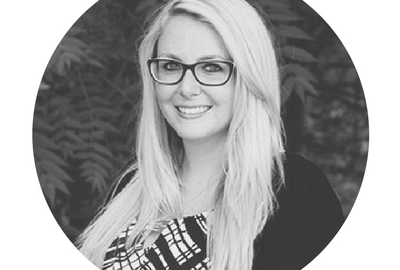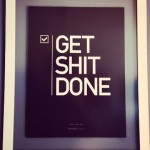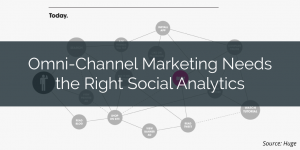One of the biggest misconceptions that brands have about digital ads is that they need to have expensive and over the top videos, target a wide range of audiences, and be a huge, well-known name to find success.
Thankfully, that’s not the case.
Beauty brands are seeing the biggest benefit from turning these rules on their heads.
Here’s how they are proving that those rules of expensive productions, massive audiences, and a huge company name to be bogus.
Digital Beauty Ad Truth #1: Fancy Isn’t A Fast-Track to Sales
When you hear the words “video ad,” you may start to think of an entire production crew, as well as models, makeup artists, and the whole experience of a Victoria’s Secret shoot.
And if you have the funds to spend to create these Academy Award winning videos for your ads, by all means, go ahead and use them.
But for the rest, it’s a welcome revelation that a big-money production for a video ad isn’t required to see a big ROI.
One of our most successful clients had a “huge” graphics team of one whole person. Yet, she taught herself how to create rotating gifs of images of their brand’s most popular products.
Before you ask, yes, that does count as a video. And in case you’re wondering whether or not something like that would work, know that this ad did so well, that the brand now exclusively runs video ads similar to that one for all of their products.
This wasn’t a one-off occasion, either. Gifs have worked for several of our clients – many beauty, many not – across ecommerce.
So while big budget productions may make for amazing summer blockbusters, you don’t need them to make bank from your digital video ads.
(2) Digital Beauty Ad Truth #2: Finding Your Focus Isn’t Just for Meditation
Beauty is all about finding what works best for you and your own individual needs. It’s no surprise then that the capabilities of Facebook and Instagram to target a wide variety of people and their specific needs would make for a perfect match for beauty brands.
On the surface, it seems logical to cast your net as wide as you can to get as many potential customers as possible. And while this may be a great strategy for branding, in terms of making sales it’s better to be targeted in your approach.
With direct response ads, you should utilize the targeting capabilities of these platforms to hone in on really relevant, receptive audiences versus trying to reach a massive crowd. (Granted, you don’t want to over-target either, so moderation is key.)
And while everyone knows that Facebook and Instagram can help you target for gender, race, ethnic origin, and age – all of which are crucial to some beauty brands, depending on what their products are, you also want to find a focused area for your specific products.
Luckily these channels also allow you to go deeper, making your ads much more relevant to your audiences. You could target people who have specialized hair needs (i.e. they dye it often, or have coarse and curly hair), or people who find joy in false lashes.

Our Director of Ad Optimization, Laura LaPerriere explains it this way: ”Let’s say you have multiple category pages on your site, such as makeup, hair products, creams, etc. You could retarget people based on that specific category of products. If people visited just hair products on your website (which you would know via the Facebook pixel on there), you would then focus your hair-care retargeting efforts on just those people. From there, you could make a lookalike of those hair-focused people, and even layer your keywords or interest categories about dyeing your hair or having coarse hair on top of that targeting.”
Laura slays with her analogies, and sums up that technique by saying, “In the same way you might layer makeup from moisturizer to primer, to foundation, and powder for a #flawless look, you want to layer your Facebook targeting to get the best results.”
And no matter what your beauty brand is offering, Facebook can help it find an audience within the 1.2 billion daily users that frequent the platform.
With so many beauty brands being launched that focus on the individualized needs of different groups of people, Facebook and Instagram ads will help you find your target audience and provide them their beauty solution.
(3) Digital Beauty Ad Truth #3: Size Really DOESN’T Matter
One of the biggest issues that small brands face is their ability to compete with the Goliaths within their verticals.
The beauty industry is no different, but thankfully social media and direct response ads are leveling the playing field.
One niche beauty brand we worked with found so much success from their ads that they sold out of their most popular inventory in only three months!
It took just a 3 short video ads to make this happen. These video ads were colorful and engaging, and our ad optimization team targeted the audiences that this brand focused on.
The layering technique we mentioned above worked well with these ads. Our team created a better Lookalike pool using the data from the brand’s website, and also retargeted audiences based on the products that they visited. By using different videos focused towards different segments of users, this niche brand was able to run with the big boys with their targeting strategy.
And as these audiences bought the products and liked them, the brand’s eye-catching creative started getting positive feedback.
For Facebook’s algorithm, when it sees positive interactions on an ad, the delivery of your ad becomes more efficient (what constitutes a positive response varies based on your objective, but they could be comments, video views, likes, conversions).
An ad’s high relevance score could empower even small brands to reach more customers – a quality product with better targeting and more compelling creative will have its enthusiasts singing its praises and will have more shoppers converting.
By getting in front of relevant audiences with their video creative, this small, niche beauty brand saw their CPA decrease by almost 40% and their CPCs decreased by a whopping 70%. Best of all, they ended up with a 209% increase in ROAS.
Just because you might be a smaller brand, doesn’t mean that you can’t compete with established brands who may have larger ad budgets.
By finding the right creative that catches people’s’ attention and using it within the parameters of a platform like Facebook, you can turn even small campaigns into huge successes.
CONCLUSION
Social media has leveled the playing field for a number of industries and has fundamentally changed the way that consumers discover, research, and purchase products.
The beauty industry has seen some of the greatest benefits of this move towards individualization. Without breaking the bank on a big video ad production, and through carefully targeted audiences, even the smaller beauty brands see massive success through digital ads.
While not everyone can wake up looking as good as Beyonce every morning, at least with throwing out the bogus rules of digital ads, you can still get the same feeling – and ad performance – of being #flawless.
Digital & Social Articles on Business 2 Community
(30)




